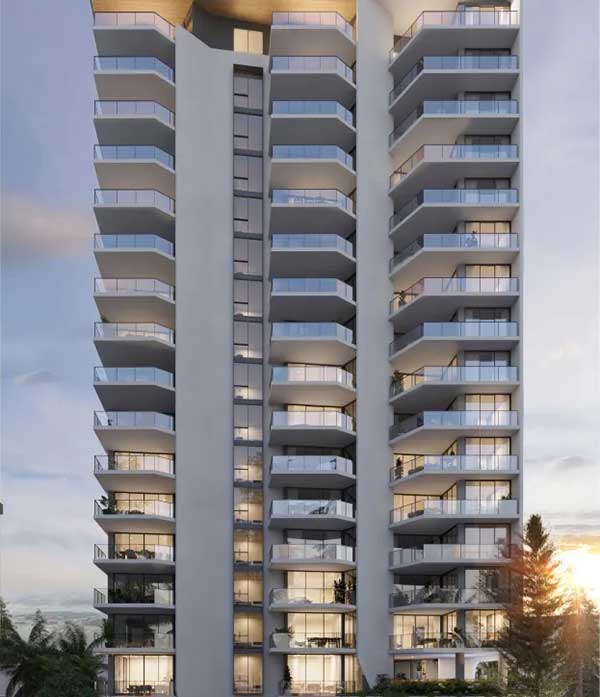The promise of a resort lifestyle at Grace by Mosaic isn’t the only remarkable quality about the boutique luxury apartments by Mosaic Property Group. As its striking front facade angles towards the expanse of the stunning Burleigh Heads coastline, the beachside development presents itself as a relaxed yet sophisticated oasis.
The design excellence underpinning this state-of-the-art property is also reflected in the consideration for its sustainability profile, and goes well beyond environmental hygiene.

The property has been designed with longevity in mind, and the reduction of future waste has been a fundamental consideration informing the development. Mosaic, a developer driven by a holistic and constantly evolving approach to sustainability, is also committed to managing the property long after it’s completed to ensure that the building is set up to run effectively and efficiently for many years to come, with a particular emphasis on energy and water consumption, waste management, and micro-climatic conditions.
Reflecting this considerate approach to construction, environmental considerations were pivotal when the project team set out to select one of the foundational materials: concrete. To maintain the property’s firm environmental focus, the project team specified Holcim’s flagship product – ECOPact Zero concrete.
The ground-breaking concrete product has not only been designed to reduce embodied carbon by approximately 30-60%, but also ensure that the remaining embodied carbon can be offset, effectively providing a carbon neutral concrete product certified by Climate Active.
“ECOPact is an environment-friendly solution as there is a reduction in Portland cement used in the concrete,” explains Grace by Mosaic’s site manager, Michael Shale. “As Portland cement is made using extreme temperatures (upwards of 1500 degrees) the burn off is harmful to our atmosphere.”
Holcim worked closely with Grace’s project team to ensure any reservations they may have had about using such a pioneering product were addressed. “Generally, when Portland cement quantity is reduced, it takes longer for the concrete to reach strength,” Michael mentions the initial considerations. “As a result, this increases construction timeframes. However, Holcim were able to increase fly ash and slag cement quantities in the concrete to enable concrete strength targets to be shortened, which then allowed construction timeframes to be reduced.”
Ensuring correct specification of concrete mix at the early stages can provide significant efficiencies to the design, sustainability outcomes and project costs.
Michael adds that fly ash and slag cement are waste products from burning coal and burning off from an iron furnace. “It is good to see that we are using waste as a recycled product in our concrete, in lieu of landfill,” he adds.
Nathan Dwyer, director structural at Oska Consulting Group and design engineer on the project, added that Holcim was also very helpful in providing all the necessary specifications and notes required for the structural documentation of the concrete elements, ensuring that the construction team had very clear instructions. He notes that creating a collaborative environment early can have a positive effect on a range of crucial aspects of the project, ranging from performance to budget.
While Grace is the first ever multi-residential project featuring Holcim’s innovative concrete product, it’s most certainly not the last. The team at Mosaic predicts that Holcim’s new offering will become their concrete of choice, and Jeff Heath – the director of Jamdev, the progressive installers of ECOPact Zero on the project – plans on recommending it for future, sustainability-focussed projects.
“We noticed absolutely no difference in set times, finish and paste, performed the same as normal mix,” Jeff summarises. “ECOPact in our opinion didn't have any negative side effects, therefore, we will be trying to implement this into our future concrete pours.”

